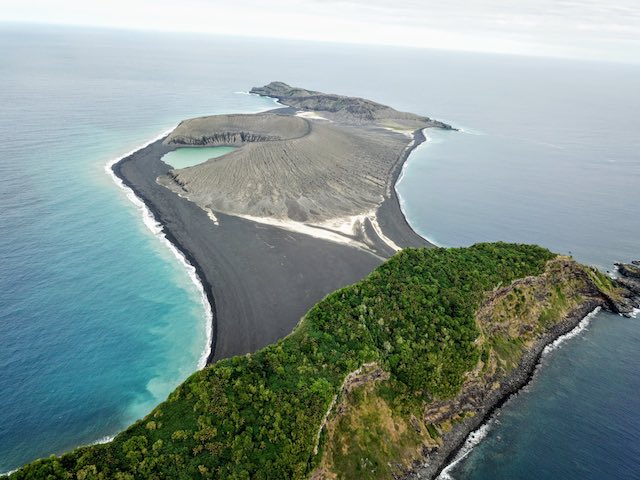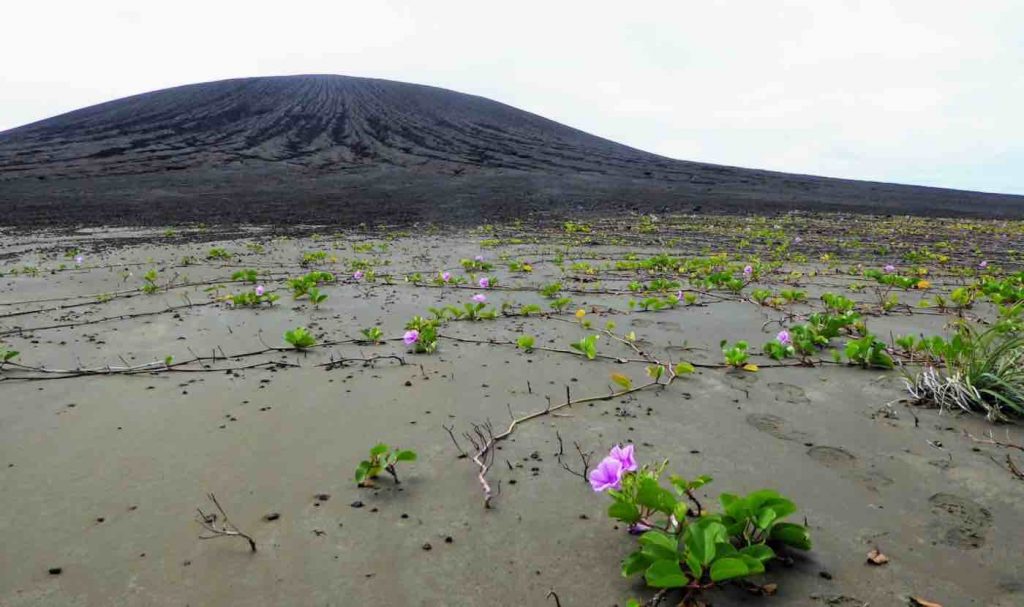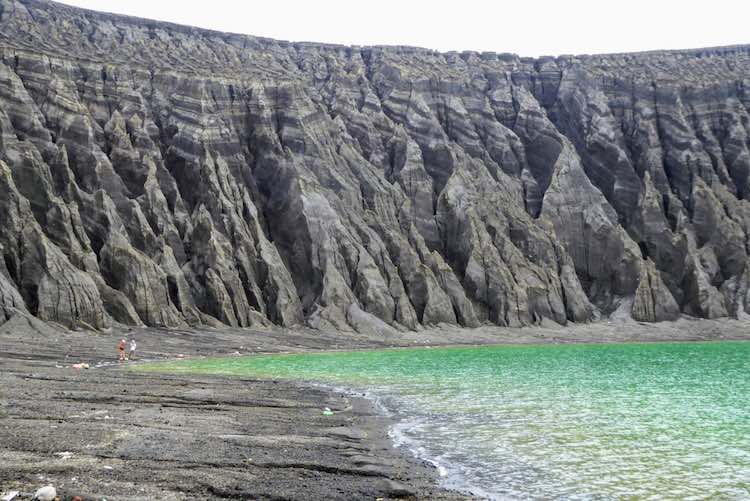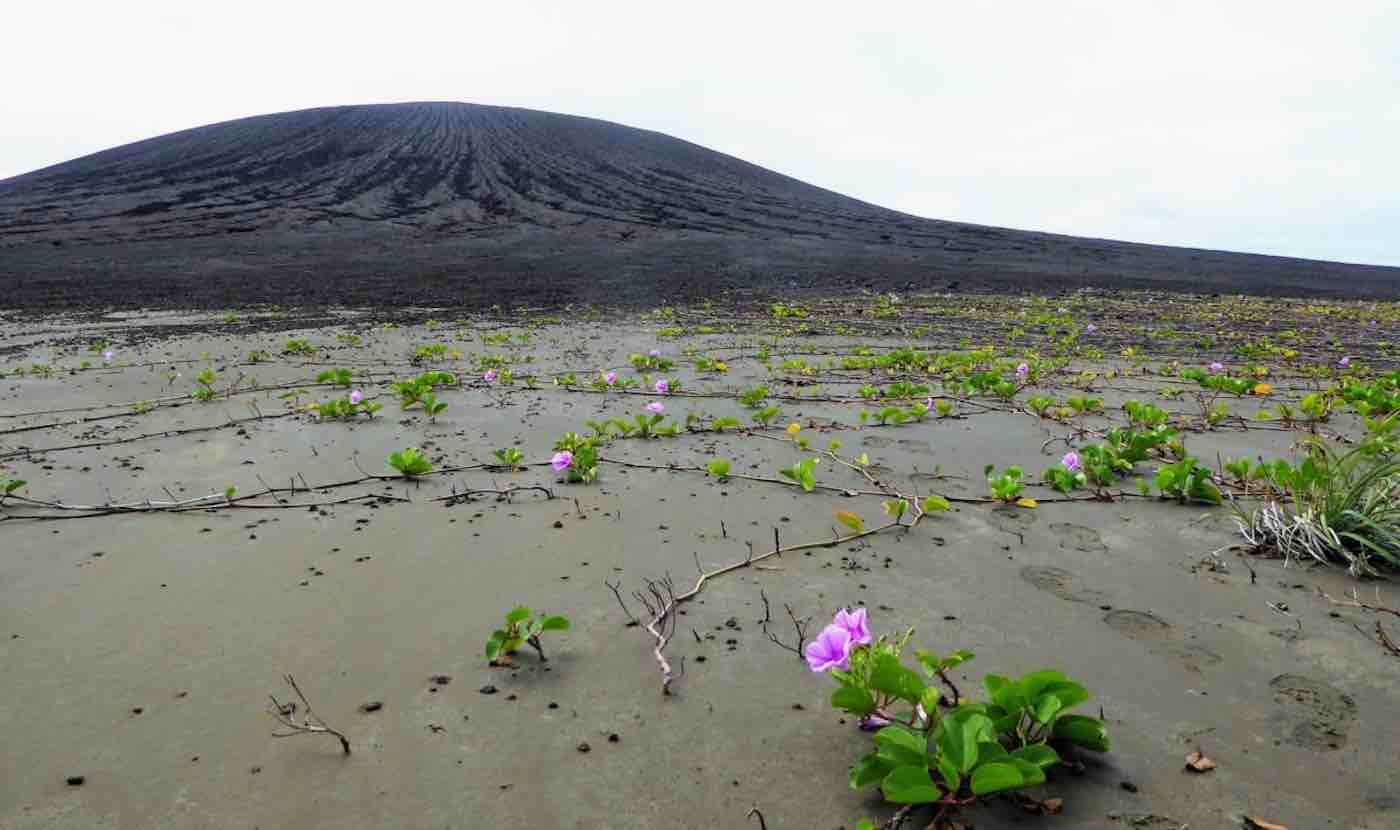
Though this little piece of land was only expected to survive for a few months, scientists are “giddy” over what they are discovering on one of the “world’s youngest island.”
Known by locals as Hunga Tonga-Hunga Ha’apai (HTHH), the island formed in the South Pacific kingdom of Tonga following a volcanic eruption in 2014.
Although many islands are formed as a result of submarine volcanic eruptions, only 3 of them have lasted more than a few months over the course of the last 150 years.
“In this case, the ash seemed to have a chemical reaction with the seawater that allowed it to solidify more than it usually would,” volcanologist Jess Phoenix told BBC.
Having only observed the small island via satellite, a team of researchers from NASA and the Sea Education Association set out in October to study the rock formations, erosion patterns, and wildlife.
Phoenix called the island’s durability a “big deal”, saying: “We’ve only had one chance to see an island like this since we had modern satellite imagery. It’s a fascinating volcano.”

Not only is the island enduring longer than expected, the 3-year-old stretch of ashy terrain is now nurturing pink-flowered plants, barn owls, and a breeding ground for tern birds.
“We were all like giddy school children,” Slayback said in a NASA blog post. “There’s no map of the new land.”
The stability of the new island is simultaneously what drew scientists to study it and allowed them to visit. Typically, increased rates of erosion leave only remnants of these volcanic ash islands behind – but researchers say that the HTHH could exist for another 30 years.
CHECK OUT: Park Rangers Delighted to Find Elephant Seals Reclaimed Beach During Government Shutdown
This gives scientists like Dan Slayback and his team a rare chance to better understand how these islands form and what leads to their dissolution. Furthermore, the island reportedly provides a kind of template for studying island formations and conditions on Mars.
“Everything we learn about what we see on Mars is based on the experience of interpreting Earth phenomena,” said Jim Garvin, chief scientist of NASA’s Goddard Space Flight Center. “We think there were eruptions on Mars at a time when there were areas of persistent surface water. We may be able to use this new island and its evolution as a way of testing whether any of those represented an oceanic environment or ephemeral lake environment.”

One of their more notable discoveries was a light-colored, sticky clay mud that left Slayback’s team bewildered as to how it got there.
“We didn’t really know what it was and I’m still a little baffled of where it’s coming from,” said Slayback.
Upon leaving the HTHH, much had been left unexplored, such as the topography of the surrounding ocean floor, and the role of hydrothermal vents in volcanic ash solidification – but Slayback is already planning a return visit to the island next year.
“It really surprised me how valuable it was to be there in person for some of this,” said Slayback. “It just really makes it obvious to you what is going on with the landscape.”
(WATCH the fascinating 2017 NASA video below)
Plant Some Positivity By Sharing The Fascinating News With Your Friends On Social Media…




















